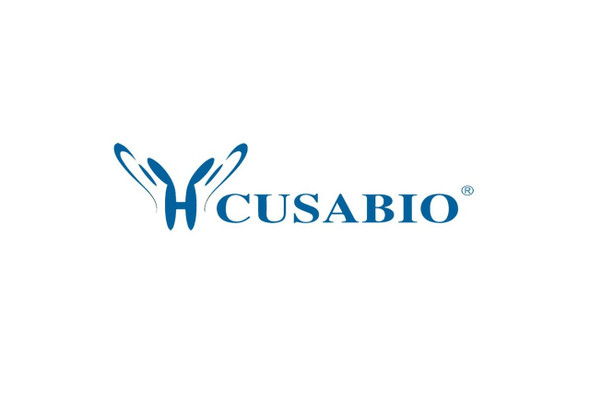Cusabio Human Recombinants
Recombinant Human Cartilage intermediate layer protein 1 (CILP), partial | CSB-BP005437HU
- SKU:
- CSB-BP005437HU
- Availability:
- 28 - 38 Working Days
Description
Recombinant Human Cartilage intermediate layer protein 1 (CILP), partial | CSB-BP005437HU | Cusabio
Alternative Name(s): Cartilage intermediate-layer protein
Gene Names: CILP
Research Areas: Immunology
Organism: Homo sapiens (Human)
AA Sequence: EDRTFLVGNLEIRERRLFNLDVPESRRCFVKVRAYRSERFLPSEQIQGVVISVINLEPRTGFLSNPRAWGRFDSVITGPNGACVPAFCDDQSPDAYSAYVLASLAGEELQAVESSPKFNPNAIGVPQPYLNKLNYRRTDHEDPRVKKTAFQISMAKPRPNSAEESNGPIYAFENLRACEEAPPSAAHFRFYQIEGDRYDYNTVPFNEDDPMSWTEDYLAWWPKPMEFRACYIKVKIVGPLEVNVRSRNMGGTHRQTVGKLYGIRDVRSTRDRDQPNVSAACLEFKCSGMLYDQDRVDRTLVKVIPQGSCRRASVNPMLHEYLVNHLPLAVNNDTSEYTMLAPLDPLGHNYGIYTVTDQDPRTAKEIALGRCFDGTSDGSSRIMKSNVGVALTFNCVERQVGRQSAFQYLQSTPAQSPAAGTVQGRVPSRRQQRASRGGQRQGGVVASLRFPRVAQQPLIN
Source: Baculovirus
Tag Info: N-terminal MBP-tagged and C-terminal 6xHis-tagged
Expression Region: 725-1184aa
Sequence Info: Partial
MW: 95.7 kDa
Purity: Greater than 85% as determined by SDS-PAGE.
Relevance: Probably plays a role in cartilage scaffolding. May act by antagonizing TGF-beta1 (TGFB1) and IGF1 functions. Has the ability to suppress IGF1-induced proliferation and sulfated proteoglycan synthesis, and inhibits ligand-induced IGF1R autophosphorylation. May inhibit TGFB1-mediated induction of cartilage matrix genes via its interaction with TGFB1. Overexpression may lead to impair chondrocyte growth and matrix repair and indirectly promote inorganic pyrophosphate (PPi) supersaturation in aging and osteoarthritis cartilage.
Reference: "Genomic organization, mapping, and polymorphisms of the gene encoding human cartilage intermediate layer protein (CILP)." Nakamura I., Okawa A., Ikegawa S., Takaoka K., Nakamura Y. J. Hum. Genet. 44:203-205(1999)
Storage: The shelf life is related to many factors, storage state, buffer ingredients, storage temperature and the stability of the protein itself. Generally, the shelf life of liquid form is 6 months at -20?/-80?. The shelf life of lyophilized form is 12 months at -20?/-80?.
Notes: Repeated freezing and thawing is not recommended. Store working aliquots at 4? for up to one week.
Function: Probably plays a role in cartilage scaffolding. May act by antagonizing TGF-beta1 (TGFB1) and IGF1 functions. Has the ability to suppress IGF1-induced proliferation and sulfated proteoglycan synthesis, and inhibits ligand-induced IGF1R autophosphorylation. May inhibit TGFB1-mediated induction of cartilage matrix genes via its interaction with TGFB1. Overexpression may lead to impair chondrocyte growth and matrix repair and indirectly promote inorganic pyrophosphate (PPi) supersaturation in aging and osteoarthritis cartilage.
Involvement in disease: Intervertebral disc disease (IDD)
Subcellular Location: Secreted, extracellular space, extracellular matrix
Protein Families:
Tissue Specificity: Specifically expressed in cartilage. Localizes in the intermediates layer of articular cartilage but neither in the superficial nor in the deepest regions. Specifically and highly expressed in intervertebral disk tissue. Expression increases with aging in hip articular cartilage. Overexpressed in articular hyaline cartilage from patients with calcium pyrophosphate dihydrate crystal deposition disease (CPPD). Expression in intervertebral disk tissue from individuals with lumbar disk disease increases as disk degeneration progresses.
Paythway:
Form: Liquid or Lyophilized powder
Buffer: If the delivery form is liquid, the default storage buffer is Tris/PBS-based buffer, 5%-50% glycerol. If the delivery form is lyophilized powder, the buffer before lyophilization is Tris/PBS-based buffer, 6% Trehalose, pH 8.0.
Reconstitution: We recommend that this vial be briefly centrifuged prior to opening to bring the contents to the bottom. Please reconstitute protein in deionized sterile water to a concentration of 0.1-1.0 mg/mL.We recommend to add 5-50% of glycerol (final concentration) and aliquot for long-term storage at -20?/-80?. Our default final concentration of glycerol is 50%. Customers could use it as reference.
Uniprot ID: O75339
HGNC Database Link: HGNC
UniGene Database Link: UniGene
KEGG Database Link: KEGG
STRING Database Link: STRING
OMIM Database Link: OMIM









